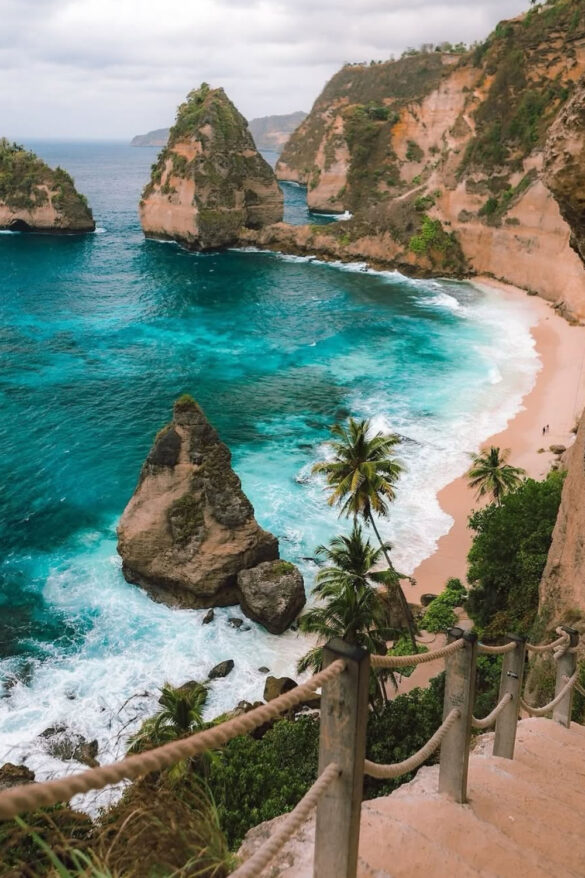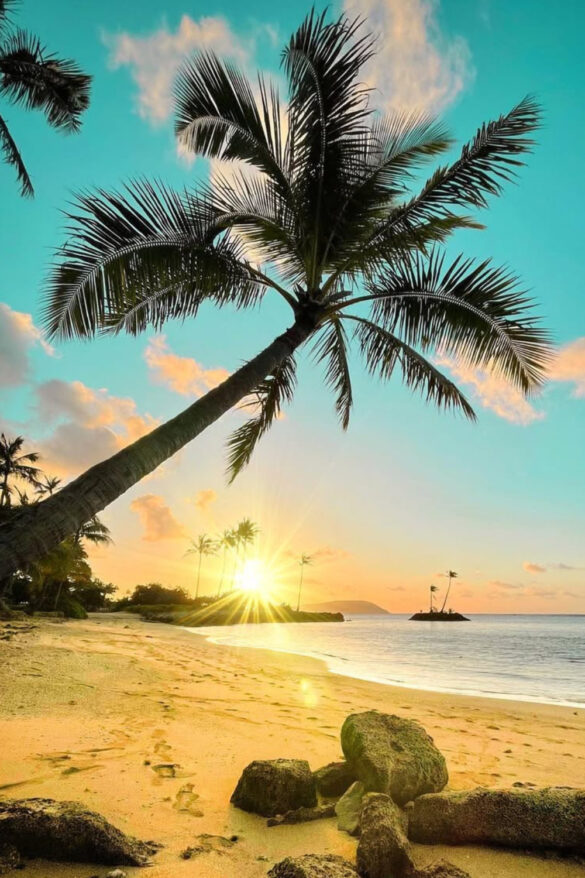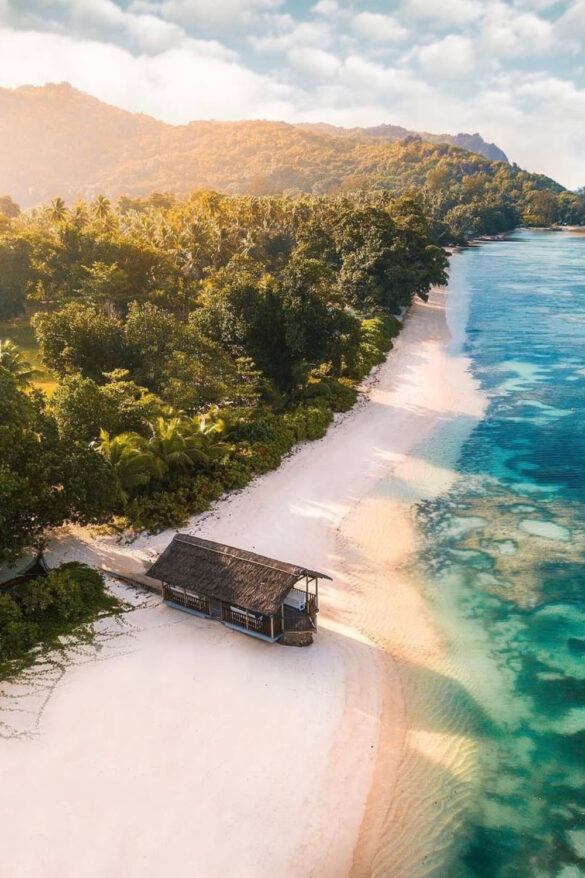Introduction: Why You Should Take a Solo Trip (and Why It’s Normal to Be Nervous)
Have you ever thought about going to a new city, hiking a mountain route, or relaxing on a beach all by yourself? Traveling alone is one of the most freeing and fulfilling things you can do, and more and more people are doing it. People are finding that traveling alone gives them a level of independence and self-discovery that is hard to attain on any other type of trip. You get to choose where to go, what to see, and when to eat without having to agree with someone else. It’s a journey that only you can have.
But let’s be honest: the thought of going on a trip by yourself for the first time can be scary. It’s quite acceptable to be nervous or even afraid. You can be worried about a lot of things, like getting lost, eating alone, or, most importantly, your safety. These worries are real, but they shouldn’t stop you from enjoying the amazing benefits of traveling by yourself. The Ultimate Travel Guide to Solo Trips is a complete guide that will help you deal with those anxieties and get ready for a safe, fun, and amazing trip. We’ll show you how to do everything, from choosing a place to go to making new acquaintances on the road.

The Planning Stage: Preparing for Your First Solo Adventure
1. Choosing the Right Destination for Your First Solo Trip
The first and most crucial thing to do when organizing a solo trip is to pick a place where you feel comfortable going. The most important thing for first-time explorers is to choose a spot that is both fun and easy to get there. A good rule of thumb is to seek for places that are known for being safe, having pleasant residents, and having strong infrastructure. A place with good public transit and a friendly culture might make it a lot less stressful to explore a new place on your own.
What makes a great first-time solo travel destination?
- Safety and Political Stability: Pick a country where crime is low and there are no travel warnings right now.
- Ease of Navigation: Choose a place where public transportation is easy to use and a lot of people speak English (or a language you know).
- Cost-Effectiveness: A place that suits your budget will help you feel less stressed about money. Finding an area with cheap meals, lodging, and things to do is a big benefit because traveling alone may be pricey.
- Popularity with Other Solo Travelers: Places that are popular with other solo travelers usually have a lot of services to help them, such social hostels, group tours, and a basic knowledge of what it’s like to travel alone.
Based on these criteria, here are some top choices often recommended for those taking their first solo trip:
| Destination | Why It’s Great for Solo Travelers |
| Iceland | Extremely safe, easy to navigate, and popular with adventure-seekers. |
| New Zealand | Stunning natural beauty, friendly people, and a well-established backpacker trail. |
| Italy | A wonderful mix of culture, food, and history. Public transport between cities is reliable, and it’s a very social country. |
| Japan | Unbelievably safe, efficient, and clean. While there might be a language barrier, the people are incredibly helpful. |
| Portugal | A budget-friendly European option with beautiful cities, a relaxed vibe, and a welcoming culture. |
When researching your destination, go beyond the standard travel guides. Look up information on local customs, dress codes, and typical social norms. Read solo travel blogs and forums to get firsthand accounts of what it’s like to be a first-time explorer there. This in-depth research will give you the knowledge you need to feel confident and prepared.
Now that you have chosen a destination for your first solo trip, it’s time to get into the nuts and bolts of preparation. This is where you can turn your initial nervousness into confidence by creating a solid plan that covers everything from what you’ll carry to how you’ll stay safe. A well-prepared first-time explorer is a confident explorer.
Essential Preparations: Packing, Budgeting, and Safety
2. Packing Smart: The Art of Traveling Light
When you’re traveling alone, it’s more important to bring the correct items than to bring a lot of them. You don’t want to have to carry a large suitcase up and down stairs or across cobblestone streets by yourself. “Less is more” is the credo for solo travel guides. Focus on clothes that can be used for more than one thing and a capsule wardrobe that you can mix and match.
- Important Papers: Put all of your travel documents, like your passport, visa (if you need one), driver’s license, and copies, in a safe place where you can get to them easily. It is also a good idea to save digital copies to a cloud service or a password-protected app and keep a set of physical copies at home with someone you trust.
- A Strong Power Bank: When you’re alone in a new place, nothing is more stressful than having a dead phone. You need to have a battery bank because your phone will be your GPS, camera, and way to talk to people.
- First Aid Kit: You need a modest, personal first aid kit that has pain relievers, bandages, antiseptic wipes, and any prescriptions you use. This little step can spare you a trip to the pharmacy, which might be hard if you don’t speak the language.
- Clothing that can be worn in many ways: Think in layers. A smart packing list for a single trip should include a waterproof jacket, comfortable shoes for walking, and a few crucial items that can be dressed up or down. A basic pair of black jeans, for example, can be worn to the museum during the day and to a beautiful restaurant at night.
3. Making a budget for your trip alone
The cost is one of the greatest worries for a lot of people who travel alone. When you travel alone, you can’t share the expense of your lodging or transportation, but you can spend as much or as little as you choose. Any decent solo travel guide should have a realistic budget as one of its main parts. Make a list of your biggest costs first, such flights, hotels, and getting around. Then, figure out how much meals, activities, and a little extra money for unexpected things will cost each day.
Sample Solo Travel Budget Breakdown (per day)
| Expense Category | Low-Budget Estimate | Mid-Range Estimate |
| Accommodation | $30-50 (hostel) | $75-120 (budget hotel/Airbnb) |
| Food | $25-40 (street food/groceries) | $50-70 (local restaurants) |
| Transportation | $10-20 (public transport) | $20-40 (taxis/rideshare) |
| Activities | $15-30 (free museums/walking tours) | $40-80 (paid attractions/day trips) |
| Contingency Fund | $20+ | $40+ |
Fact: A 2022 survey by the Solo Travel Society found that 46% of solo travelers spend less than $1,000 on a one-week trip, proving that solo travel can be done on a budget. It’s not about being cheap, but about being smart with your money.
4. Safety First: The Ultimate Solo Trip Guide to Peace of Mind
This is probably the most important part of any complete guide on traveling alone. Your safety is the most important thing. Most destinations are rather safe, but a traveler who is ready is a safe traveler.
- Tell someone about your plans: Always send a family member or close friend a copy of your flight details, hotel information, and general travel plans. Even if it’s only a short text message, check in with them often.
- Follow Your Gut: If something or someone feels wrong, it probably is. Don’t worry about being impolite; just get out of the situation. When you’re exploring for the first time, your gut feeling is the best way to be safe.
- Don’t Stand Out, Blend In: Don’t look like a tourist. Dress like the people who live there, pay attention to what’s going on around you, and don’t show off your costly electronics or jewelry. A typical safety tip is to have a “decoy wallet” with a little bit of cash and an expired card in it. If someone tries to steal your genuine wallet, you can give them the decoy wallet.
- Be Smart with Your Valuables: Lock your hostel locker, keep your passport and cash in a money belt or a secure bag beneath your clothes, and don’t leave your things unattended.
- Learn about frequent scams: Each popular tourist spot has its own set of frauds that happen all the time. Take a few minutes to Google up “common scams in [your destination]” so you know what to watch out for, including tour guides who are too eager or false petitions.
The Solo Travel Society has a lot of articles and tools on how to stay safe while traveling alone. Their website has more detailed information, such as safety tips for each city and advice on how to handle crises.

On the Road: Making the Most of Your Solo Trip
5. Embracing the Freedom of Solo Travel
When you’re on the ground and free from the needs of people, that’s when the real beauty of a solo travel happens. This is your own particular trip, a one-of-a-kind quest of self-discovery. There are many ways that this independence shows itself. Imagine waking up with no plans and then deciding to spend the whole day at a local market or to take a bus excursion to a nearby village on a whim. If you want, you can spend five hours at one museum. If you don’t want to go to tourist traps, you can just sit in a park and observe people. This freedom is more than simply a nice thing; it’s a strong way to grow as a person. It makes you pay attention to your own feelings and intuition, which helps you learn more about yourself. A well-known example of this is the story of Sarah, a traveler who went to Portugal for the first time by herself. She had a strict schedule, but on the second day, she met a local artist who asked her to an informal gallery opening. She canceled her plans for the afternoon and spent the evening chatting to people who lived there and finding a section of the city that a guidebook would never have shown her. This unplanned detour turned out to be the best part of her vacation and a turning point in her solo travel experience.
6. Making Connections: How to Meet People While Traveling Alone
Traveling alone is about being independent, but it doesn’t mean you have to be alone all the time. One of the best things first-time travelers can do is look for chances to meet new people. This might be one of the best parts of the trip because you’ll meet a lot of interesting individuals from various walks of life. Don’t be shy; a lot of the people you meet, especially in hostels or on excursions, are also traveling alone and want to make new acquaintances.
How to Meet People in Real Life:
- Stay at hostels: Even if you like your own room, the common spaces, kitchens, and planned events are great places to meet other travelers.
- Go on a group tour. These activities, like a free walking tour, a cooking class, or a bar crawl, are meant to be social and are full with people who want to talk.
- Take part in activities: Take a language class, a dance class, or a ceramics class, for example. Having the same activities makes it easy to talk to each other and feel close.
- Use Technology: Apps like Meetup.com and Couchsurfing’s “Hangouts” function can help you identify events in your area or other travelers to meet up with.
- Volunteer: A short-term volunteering job might help you get to know a local community and meet people who share your interests.
A Hostelworld poll from 2023 found that a shocking 82% of lone travelers stated they made new friends on their excursions. This shows how easy it is to establish friends when you’re open to it.
7. How to Eat Alone Like a Pro
Many first-time travelers are really worried about the idea of eating dinner alone at a restaurant. It’s frequently the hardest thing for your mind to get past. But think of it as a great chance. You may pick any restaurant you want without having to argue about it, take your time, and really enjoy the food without any distractions. Instead of seeing it as something you have to do, see it as a way to take care of yourself and find calm.
For example: The travel writer Bill Bryson once said, “When you travel alone, you’re not really alone.” This remark wonderfully sums up this feeling. You’re only with yourself.
How to Enjoy Eating Alone:
- Sit at the Bar: This is the best trick. Bartenders are usually good at talking to people, and there are other people eating alone or in small groups around you, so it doesn’t feel too obvious.
- Enjoy Casual Restaurants: Local cafes, street food booths, and marketplaces are great places to eat alone quickly, deliciously, and without any stress.
- Bring something to do: Use the time to write in a notebook, read a book, or plan what you’ll do next. This helps the time feel like it’s being used for something instead than nothing.
- Remember, No One Cares: The most crucial thing to remember is that no one in the restaurant cares that you’re eating alone. They are paying attention to their own meals and talks.

The Aftermath: Reflecting on Your Solo Journey and The Conclusion
The solo trip doesn’t really finish until the flights are booked, the luggage are unpacked, and the pictures are posted. The most important thing about a solitary vacation is how it changes you for the better. As a first-time traveler, you’ll come home not only with a camera full of memories, but also with a new way of seeing yourself and the world. This last part of our complete travel guide for solo travelers is all about recognizing and using the personal growth that comes with traveling alone.
There are several benefits to traveling alone that go beyond the fun you have on the road. You have to be more inventive and tough since you have to deal with a lot of tiny problems all the time, like figuring out how to use a foreign subway system, ordering food in a new language, or just finding ways to keep yourself busy for hours. You’ll probably come home with more confidence and faith in your own skills. A lot of people who travel alone talk about this. For instance, a research in the Journal of Travel Research indicated that people who travel alone report much higher levels of personal growth, such as higher self-esteem and independence, than people who travel with others. This is because you make every choice, and every success, no matter how tiny, is a win you got on your own. You find out that you can do a lot more than you believed you could.
The most important thing is to remember these teachings. The talents you learned while traveling can be used in your daily life.
How to Use Your Solo Travel Experience:
- Accept Your New Freedom: Use the confidence you got from facing new obstacles at work or in your personal life. It may be finally signing up for that language lesson you’ve been putting off or speaking up more at meetings.
- Keep your curiosity alive: Do you remember how exciting it was to find a new part of town? Use the same sense of wonder on your own city. Go to a museum you’ve always passed by or an area you’ve never been to.
- Write in a journal and think about it: Keep writing in your journal about what you’ve done and how you feel. This helps you remember what you’ve learnt and keep your recollections fresh. Tell other people your story to motivate them.
- Keep things spontaneous: Don’t go back to a strict schedule. Plan a “free day” once a month when you do something totally unexpected, just like you would on your own trip.
In conclusion, your journey alone starts now. You know everything you need to know. You’ve learned how to pick the proper place to go, pack smartly, stick to your budget, and put your safety first. The most essential thing this guide has taught me is that the best aspect of going on a solo trip is how much you’ll grow as a person along the way. The first fear is real, but the huge sense of success and self-discovery that comes after is worth it. This ultimate travel guide to solo trips: tips for first-time explorers is more than simply a how-to book. It’s an invitation to leave your comfort zone and go on a trip that will transform you for the better. The world is ready for you to explore it in your own way. Now all you have to do is take the first step.
References:
- Solo Travel Society: A non-commercial community and resource for solo travelers worldwide.
- Journal of Travel Research: Academic journal with studies on travel behavior and its psychological impacts.
- Hostelworld Solo Traveler Survey 2023: Annual report on solo travel trends and demographics.





